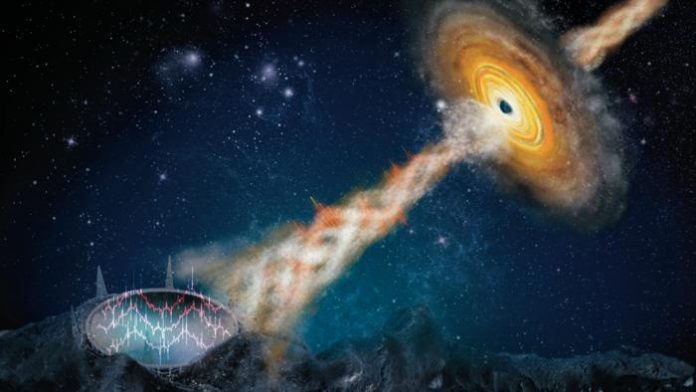
Astronomers report groundbreaking discoveries in nature—detecting a unique quasi-periodic oscillation (QPO) signal from a Galactic microquasar
China has been at the forefront of avidly pursuing space exploration endeavors.
Ultimately, this has been conducted by using China’s FAST radio telescope
Microquasars are compact binary star systems comprising a stellar black hole or neutron star that actively accretes material from its companion star.
As the accretion occurs, vast amounts of matter swirl around the compact object, releasing copious amounts of energy.
This energetic release produces intense emissions across the electromagnetic spectrum, including radio waves.
Unravelling the galactic black holes
Black holes, the enigmatic wonders of the cosmos, exhibit incredible features that astound like a scene from science fiction. These celestial entities include stellar-mass black holes, which unveil their presence by devouring materials from companion stars.
Additionally, supermassive black holes reside at the centre of galaxies, forming luminous compact regions called quasars, with masses reaching millions to billions of suns. Some accreting stellar-mass black holes are called microquasars, capable of emitting magnetised plasma jets.
Unprecedented discovery of microquasar system
An international team of scientists, including UNLV astrophysicist Bing Zhang, has conducted an extensive observational campaign on the Galactic microquasar known as GRS 1915+105.
In a groundbreaking revelation published in Nature on July 26, the team unveiled unprecedented features of this microquasar system.
Unveiling the Rbadio and QPO signal
Astronomers achieved a historic milestone by employing China’s Five-hundred-meter Aperture Spherical radio Telescope (FAST). They detected a quasi-periodic oscillation (QPO) signal in the radio band—a first for any microquasar system.
While astronomers have observed QPOs in X-rays from microquasars, discovering them as part of the system’s radio emission is an exceptional occurrence.
A glimpse into black hole jets
The peculiar QPO signal, occurring roughly every 0.2 seconds with a frequency of 5 Hertz, may provide essential evidence of activity from a “jet” launched by a Galactic stellar-mass black hole.
Jets are streams of charged matter and magnetic fields moving at nearly the speed of light, often found by black hole binary systems.
The study’s corresponding author, UNLV’s Bing Zhang, suggests a misalignment between the black hole’s spin axis and its accretion disk could induce the observed effect. Continued observations of this and other Galactic microquasars promise to unlock more clues about these mysterious QPO signals.
In conclusion, this groundbreaking discovery opens new doors to understanding the enigmatic nature of Galactic black holes, shedding light on the fascinating phenomena within the cosmos.
Astronomers are eagerly awaiting further observations and insights into these celestial marvels.










